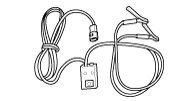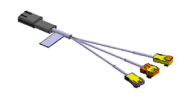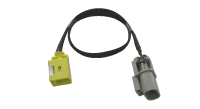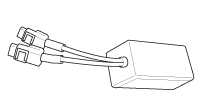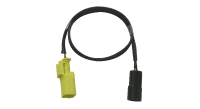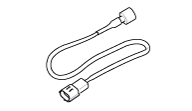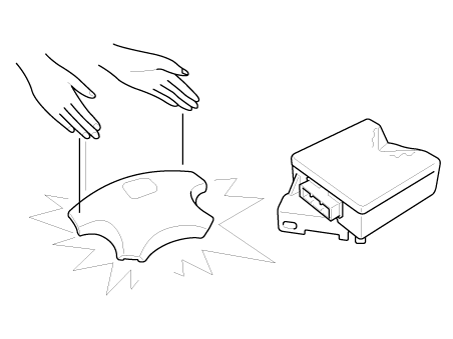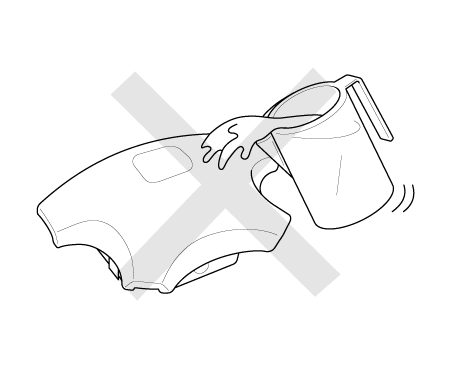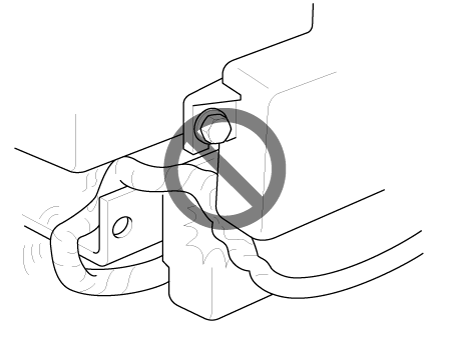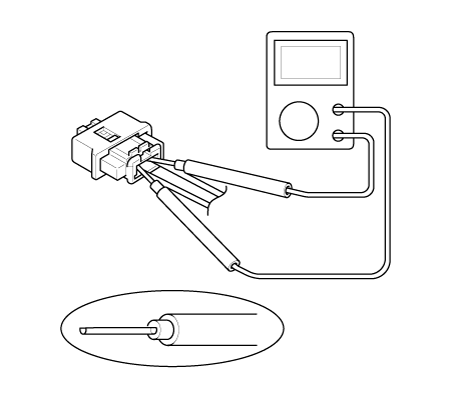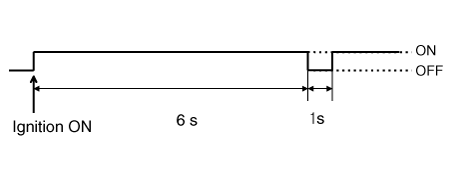Kia Stinger: Restraint
General information
| General |
The supplemental restraint system (SRS) is designed to supplement the seat belt to help reduce the risk or severity of injury to the driver and passenger by activating and deploying the driver, passenger, side airbag and seat belt pretensioner in certain frontal or side collisions.
The SRS (Airbag) consists of: a driver side airbag module with the folded cushion and an inflator unit located at the center of the steering wheel, a passenger side airbag module with the folded cushion assembled with inflator unit located in the passenger side crash pad, side airbag modules with the folded cushion and an inflator unit located in the front seat, and curtain airbag modules with folded cushions and inflator units located inside the headliner. The impact sensing function of the SRSCM is carried out by electronic accelerometer that continuously measures the vehicle’s acceleration and delivers the corresponding signal through amplifying and filtering circuitry to the microprocessor.
SRSCM (SRS Control Module)
SRSCM will detect front impact with front impact sensor, and side impact with side impact sensor, to determine airbag module deployment.
| 1. |
DC/DC converter: DC/DC converter in power supply unit includes up/down transformer converter, and provides ignition voltage to 2 front airbag ignition circuits and the internal operation voltage to the SRSCM. If the internal operation voltage is below critical value setting, it will perform resetting. |
| 2. |
Back up power supply: SRSCM has separate back up power supply, that will supply deployment energy instantly in low voltage condition or upon power failure by front crash. |
| 3. |
Self diagnosis: SRSCM will constantly monitor current SRS operation status and detect system failure while vehicle power supply is on. System failure may be checked with trouble codes using KDS. |
| 4. |
Airbag warning lamp on: Upon detecting error, the module will transmit signal to SRSCM indicator lamp located in cluster. MIL lamp will inform the driver of SRS error. Upon Ignition on, SRS lamp will turn on for about six seconds. |
| 5. |
Trouble code registration: Upon error occurrence in system, SRSCM will store DTC corresponding to the error. DTC can be cleared only by KDS. However, if an internal fault code is logged or if a crash is recorded, the fault code(s) cannot be cleared. |
| 6. |
Self diagnostic connector: Data stored in SRSCM memory will be sent to KDS or other external output devices through connector located below the driver side crash pad. |
| 7. |
Once airbag is deployed, the SRSCM must be replaced. It should never be reused. |
| 8. |
SRSCM will determine whether passenger is wearing the seat belt by the signal from built-in switch in the seat belt buckle, and deploy front seat airbag at each set of crash speed. |
| 9. |
Side airbag deployment will be determined by SRSCM that detects satellite sensor impact signal upon a side crash, irrespective to seat belt condition. |
| 10. |
SRSCM senses the vehicle rollover by using the rollover sensor. SAB, CAB, and BPT will be deployed in case of mechanical movement of the SRSCM with ignition ON. For this reason, disconnect the battery negative cable before repairing the SRSCM. |
| 11. |
Check for the normal operation of SRSCM after repair procedure. |
Special service tools
| Special Service Tools |
|
Tool Name / Number |
Illustration |
Description |
|
Deployment tool 0957A-34100A |
|
Used for deploying airbag |
|
Deployment adapter 0K57A-3U100A |
|
Used with the deployment tool (0957A-34100A) when deploying DAB, PAB, CAB,
BPT, EFD |
|
Deployment adapter 0957A-3F100 |
|
Used with the deployment tool (0957A-34100A) when deploying KAB |
|
Deployment adapter 0957A-2W100 |
|
Used with the deployment tool (0957A-34100A) when deploying SAB |
|
Dummy 0957A-38200 |
|
Simulator to check the resistance of airbag wiring harness |
|
Dummy adapter 0957A-2W200 |
|
Used with the dummy (0957A-38200) when checking the resistance of SAB |
|
Dummy adapter 0957A-3F000 |
|
Used with the dummy (0957A-38200) when checking the resistance of KAB |
|
Dummy adapter 0957A-2G000 |
|
Used with the dummy (0957A-38200) when checking the resistance of DAB, PAB, CAB, BPT, EFD |
DAB : Driver Airbag
PAB : Passenger Airbag
SAB : Side Airbag
CAB : Curtain Airbag
BPT : Seat Belt Pretensioner
EFD : Emergency Fastening Device
KAB : Knee Airbag
General safety information and caution
| Precautions |
| General Precautions |
Please read the following precautions carefully before performing the airbag system service.
Observe the instructions described in this manual, or the airbags could accidentally deploy and cause damage or injuries.
| • |
Except when performing electrical inspections, always turn the ignition switch OFF and disconnect the negative cable from the battery, and wait for at least three minutes before beginning to work. |
The contents in the memory are not erased even if the ignition switch is turned OFF or the battery cables are disconnected from the battery. |
| • |
Use the replacement parts which are manufactured to the same standards as the original parts and quality. Do not install used SRS parts from another vehicle. Use only new parts when making SRS repairs. |
| • |
Carefully inspect any SRS part before installing it. Do not install any part that shows signs of being dropped or improperly handled, such as dents, cracks or deformation.
|
| • |
Before removing any of the SRSCM parts (including the disconnection of the connectors), always disconnect the SRSCM connector. |
Airbag Handling and Storage
Do not disassemble the airbags; it has no serviceable parts. Once an airbag has been deployed, it cannot be repaired or reused.
For temporary storage of the airbag during service, please observe the following precautions.
| • |
Store the removed airbag with the pad facing up. |
| • |
Keep the airbag assembly free from any oil, grease, detergent or water to prevent damage.
|
| • |
Store the removed airbag on secure, flat surface away from any high heat source (exceeding 85 °C/185 °F). |
| • |
Never perform electrical inspections to the airbags, such as measuring resistance. |
| • |
Keep away from the airbag assembly during removal, inspection, or replacement. |
| • |
Refer to the scrapping procedures for disposal of the damaged airbag. |
| • |
Be careful not to bump or impact the SRS unit or the side impact sensors or front impact sensors whenever the ignition switch is ON. Turn off the ignition and wait for at least three minutes before beginning to work. |
| • |
During installation or replacement, be careful not to bump (by impact wrench, hammer, etc.) the area around the SRS unit and the side impact sensor and the front impact sensors. The airbags could accidentally deploy and cause damage or injury. |
| • |
Replace the front airbag module, SRSCM, and FIS when the front airbag is deployed. Replace the airbag wiring when the airbag wiring gets damaged. Replace the side airbag module, the curtain airbag module, SRSCM, and SIS when the side airbag is deployed. Replace the airbag when the airbag wiring gets damaged. |
| • |
After a collision in which the airbags or the side airbags did not deploy, inspect for any damage or any deformation on the SRS unit and the side impact sensors. If there is any damage, replace the SRS unit, the front impact sensor and/or the side impact sensors. |
| • |
Do not disassemble the SRS unit, the front impact sensor or the side impact sensors. |
| • |
Switch OFF the ignition, disconnect the negative battery cable and wait for at least three minutes before beginning installation or replacement of the SRS unit. |
| • |
Be sure that the SRS unit, the front impact sensor and side impact sensors are installed securely with the mounting bolts. |
| • |
Do not spill water or oil on the SRS unit, or the front impact sensor or the side impact sensors and keep them away from dust. |
| • |
Store the SRS unit, the front impact sensor and the side impact sensors in a cool (15 - 25 °C/ 59 - 77 °F) and dry (30 - 80 % relative humidity, no moisture) area. |
Wiring Precautions
SRS wiring can be identified by special yellow outer covering. Observe the instructions described in this section.
| • |
Never attempt to modify, splice, or repair SRS wiring. If there is an open or damage in SRS wiring, replace the harness.
|
| • |
Be sure to install the harness wires so that they are not pinched, or interfering with other parts.
|
| • |
Make sure all SRS ground locations are clean, and grounds are securely fastened for optimum metal-to-metal contact. Poor grounding can cause intermittent problems that are difficult to diagnose. |
Precautions for Electrical Inspections
| • |
When using electrical test equipment, insert the probe of the tester into the wire side of the connector. Do not insert the probe of the tester into the terminal side of the connector, and do not tamper with the connector.
|
| • |
Use a u-shaped probe. Do not insert the probe forcibly. |
| • |
Use specified service connectors for troubleshooting. Using improper tools could cause an error in inspection due to poor metal contact. |
Spring-Loaded Lock Connector
Some SRS system connectors have a spring-loaded lock.
Airbag Connector
| Disconnecting |
To release the lock, pull the spring-loaded sleeve (A) and the slider (B) while holding the opposite half of the connector.
Pull the connector halves apart. Be sure to pull on the sleeve and not on the connector half.

| Connecting |
Hold both connector halves and press firmly until the projection (C) of the sleeve-side connector clicks to lock.
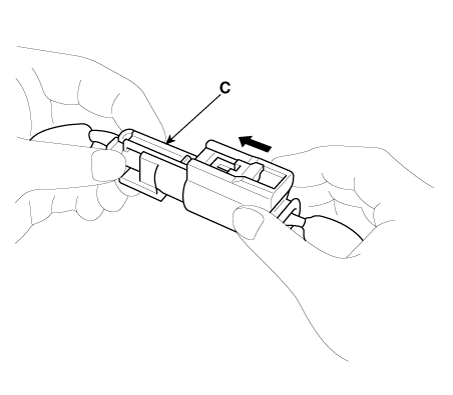
Description and operation
| Warning Lamp Activation |
| Warning Lamp Behavior after Ignition On |
As soon as the operating voltage is applied to the SRSCM ignition input, the SRSCM activates the warning lamp for the LED lamp check.
The lamp shall turn on for 6 seconds during the initialization phase and off afterward.
To alert the driver, the warning lamp shall turn on for 6 seconds and off for one second then on continuously after the operating voltage is applied if any active fault exists.
| 1. |
Active fault or historical fault counter is greater or equal to 10.
|
| 2. |
Normal or historical fault counter is less than 10.
|
| 3. |
When the ignition is switched ON during variant coding (EOL) mode, the airbag warning lamp will illuminate and blink at intervals of 1 second until the coding is completed. In case the variant coding is completed properly, the airbag warning lamp will turn on for 6 seconds, and then off. Otherwise, the airbag warning lamp will continuously blink at intervals of 1 second.
When there is active fault in airbag system or SRSCM internal fault, the variant coding (EOL) cannot be completed. In this case, perform variant coding (EOL) procedure again after troubleshooting with the KDS. |
SRSCM Independent Warning Lamp Activation
There are certain fault conditions in which the SRSCM cannot function and thus cannot control the operation of the standard warning lamp. In these cases, the standard warning lamp is directly activated by appropriate circuitry that operates independently of the SRSCM. These cases are:
| 1. |
Loss of battery supply to the SRSCM : warning lamp turned on continuously. |
| 2. |
Loss of internal operating voltage : warning lamp turned on continuously. |
| 3. |
Loss of Microprocessor operation : warning lamp turned on continuously. |
| 4. |
SRSCM not connected : warning lamp turned on continuously. |
Telltale Lamp Activation
The Telltale Lamp indicates whether the Passenger Airbag (PAB) is enabled or disabled based on the occupant status on passenger seat. If the passenger seat is empty or occupied with a child (or child seat), the Passenger Airbag will be disabled and the Telltale Lamp will be turned ON to inform the driver that the PAB is disabled. As soon as operating voltage is applied to the SRSCM ignition input, the SRSCM activates telltale lamp prove out. ODS (Occupant Detection System) will send an indeterminate status to the SRSCM as a default setting for passenger airbag deployment during the prove out period.
After ignition on, telltale lamp will turn on for 4 seconds and turn off for 3 seconds during the initialization phase and be turned ON afterward until receipt of valid enabled message from ODS system.

Repair procedures
| Component Replacement After Deployment |
Before any SRS repairs, use the KDS to check for DTCs. Refer to the Diagnostic Trouble Code list for repairing related DTCs. |
When the front airbag(s) deployed after a collision, replace the following items.
| – |
SRSCM |
| – |
Deployed airbag(s) |
| – |
Seat belt pretensioner(s) |
| – |
Front impact sensors |
| – |
Inspect the clock spring for heat damage. For any damage found, replace the clock spring. |
When the side/curtain airbag(s) deployed after a collision, replace the following items.
| – |
SRSCM |
| – |
Deployed airbag(s) |
| – |
Side impact sensor(s) for the deployed side(s) |
| – |
Airbag wiring harness |
| – |
Seat belt pretensioner(s) |
After the vehicle is completely repaired, confirm the SRS airbag system is OK.
| – |
Turn the ignition switch ON; the SRS indicator should light on for about six seconds and then off. |
Components and components location
| Components Location |
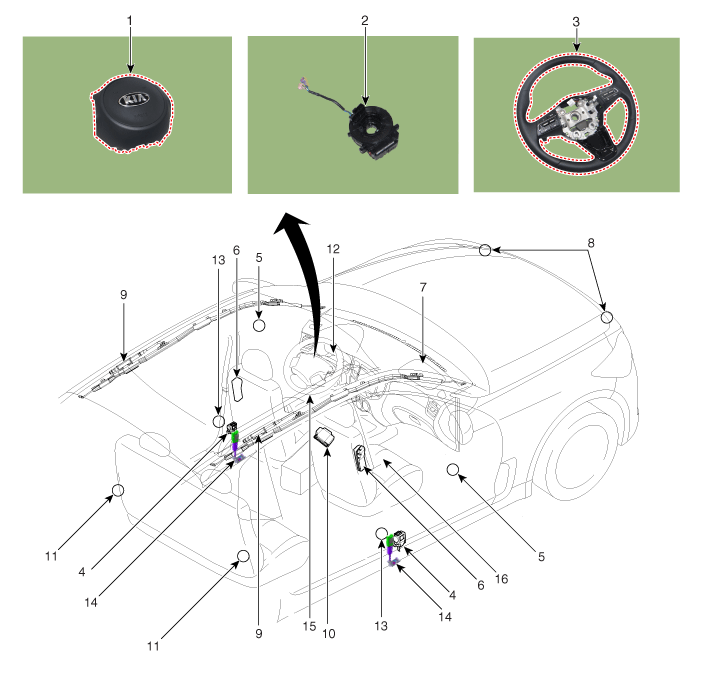
| 1. Driver Airbag (DAB) 2. Clock Spring 3. Steering Wheel 4. Seat Belt Pretensioner (BPT) 5. Pressure Side Impact Sensor (P-SIS) 6. Side Airbag (SAB) 7. Passenger Airbag (PAB) 8. Front impact sensor (FIS) |
9. Curtain Airbag (CAB)
10. Supplemental Restraint System Control Module (SRSCM) 11. Rear Gravity side Impact Sensor (R-SIS) 12. Airbag Warning Lamp 13. Front Gravity side Impact Sensor (G-SIS) 14. Emergency Fastening Device (EFD) 15. Knee Airbag (KAB) 16. Occupant Classification System (OCS) |
- Specifications
- SRSCM
- SRS Control Module (SRSCM)
- Front Impact Sensor (FIS)
- Side Impact Sensor (SIS)
- Seat Belt Buckle Switch (BS)
- Airbag Module
- Driver Airbag (DAB) Module and Clock Spring
- Passenger Airbag (PAB) Module
- Side Airbag (SAB) Module
- Curtain Airbag (CAB) Module
- Knee Airbag (KAB) Module
- Seat Belt System
- Active hood lift system
 Steering Column & Shaft
Steering Column & Shaft
Components and components location
Components
1. Steering column module (SCM)
2. Steering column module (SCM)
bracket
Specifications
Spec ...
 Specifications
Specifications
Service data
Specification
Item
Resistance (Ω)
Driver Airbag (DAB)
1.7 - 2.3
Passenger Airbag (PAB)
...
Other information:
Kia Stinger CK 2018-2025 Service Manual: Side Airbag (SAB) Module
Description and operation Description Installed inside the front seat, the side airbags (SAB) protect the driver and front passenger from danger in the event of a side crash. The SRSCM determines deployment of side airbag based on Side Impact Sensor (SIS) signal. ...
Kia Stinger CK 2018-2025 Owners Manual: Luggage net (holder)
To keep items from shifting in the cargo area, you can use the holders located in the cargo area to attach the luggage net. CAUTION To prevent damage to the goods or the vehicle, care should be taken when carrying fragile or bulky objects in the luggage compartment. WARNING To avoid eye in ...

